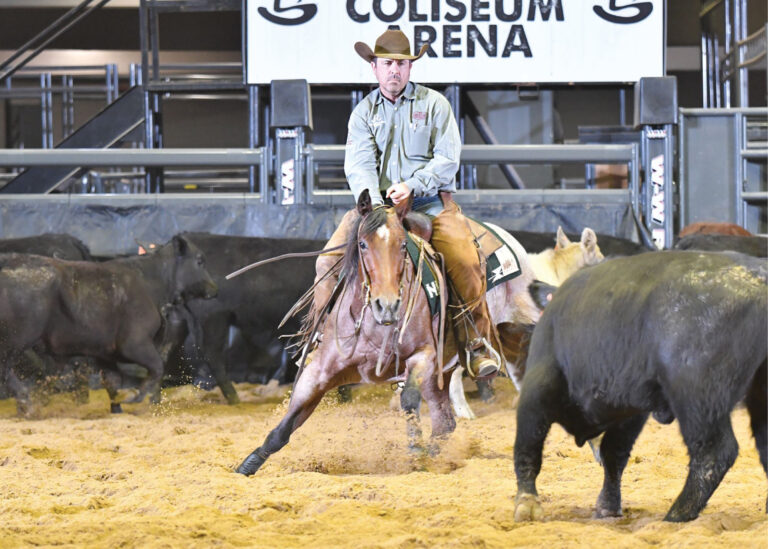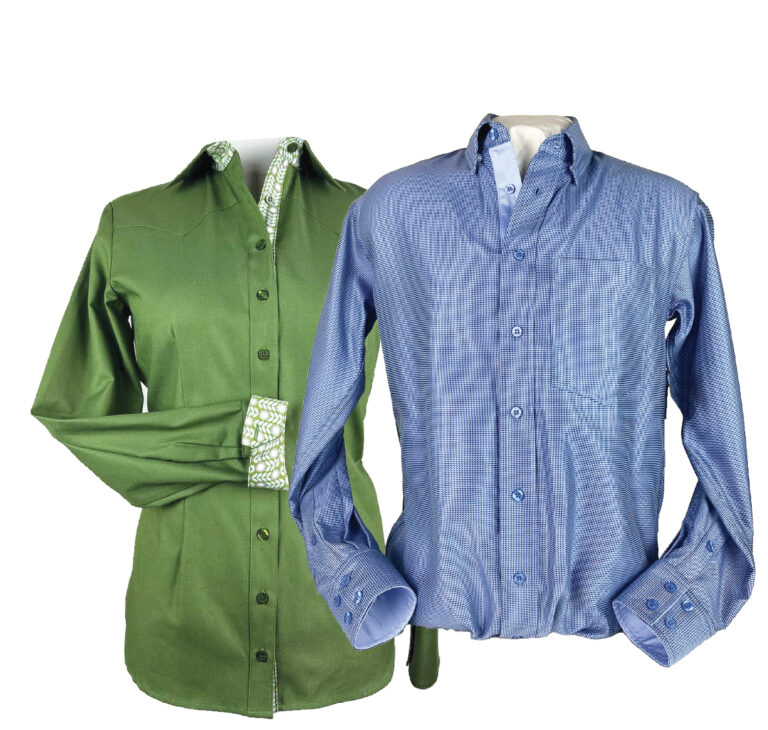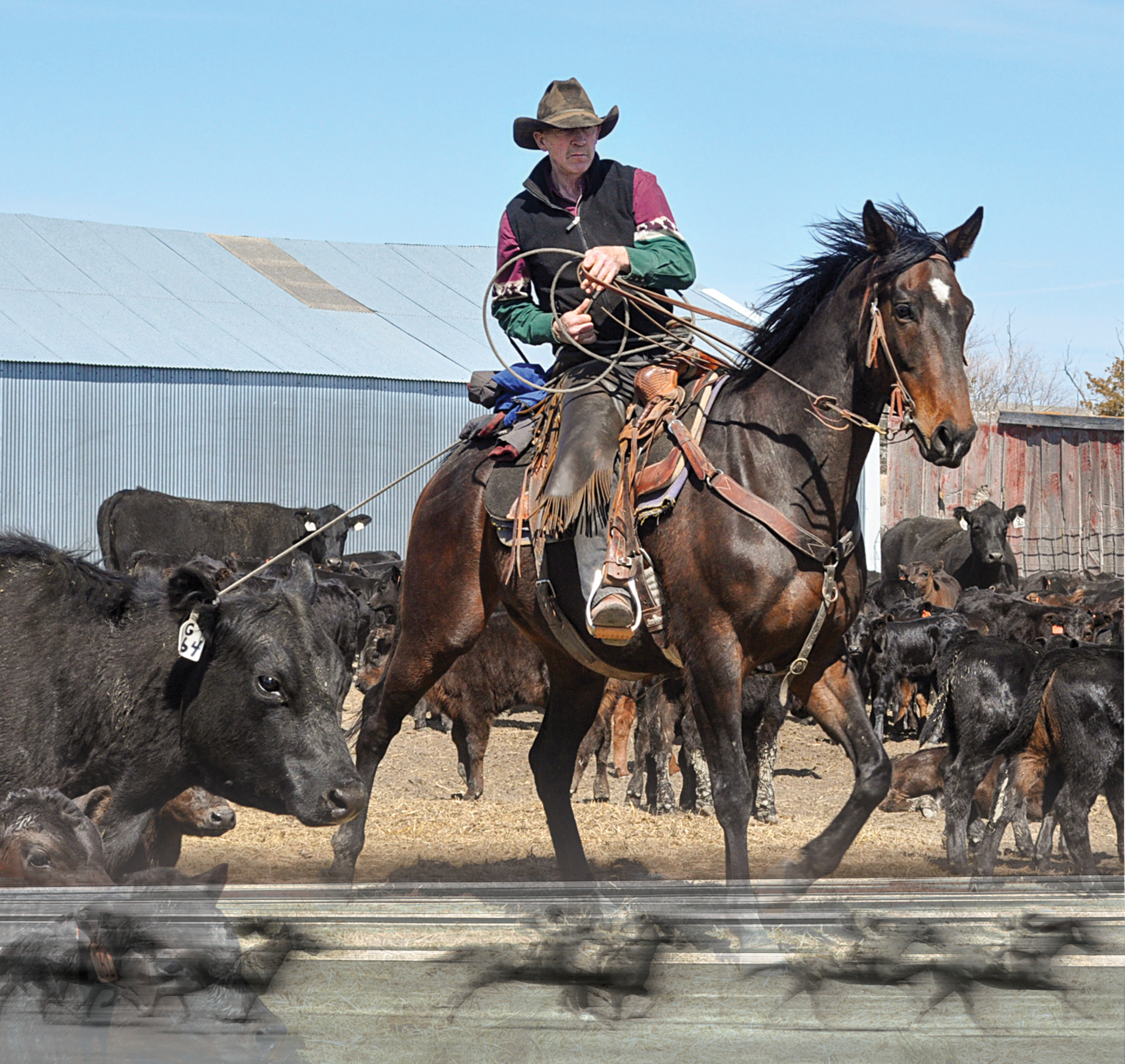
In 2009, the gelding Well Armed streaked past the finish line in what was then the world’s richest Thoroughbred race—The Grade 1 Dubai World Cup. The 6-year-old bay, owned by WinStar Stable, would race one more time before retiring.
Today, you can sometimes see the tall bay gelding under Western tack being ridden around the Rafter C Ranch in Flower Mound, Texas, by owner Bill Casner. Both look comfortable in their attire, and the now-16-year-old gelding seems to be loving his new life. During his career on the track, Well Armed earned more than $5,000,000, but now he’s a cow pony. It’s one of the more amazing racehorse-to-ranch-horse stories.
“He was a pretty special racehorse,” Casner says of the gelding. “I’ll probably never own another like him in my lifetime.”
Casner adds that the homebred gelding’s one flaw never slowed him down.
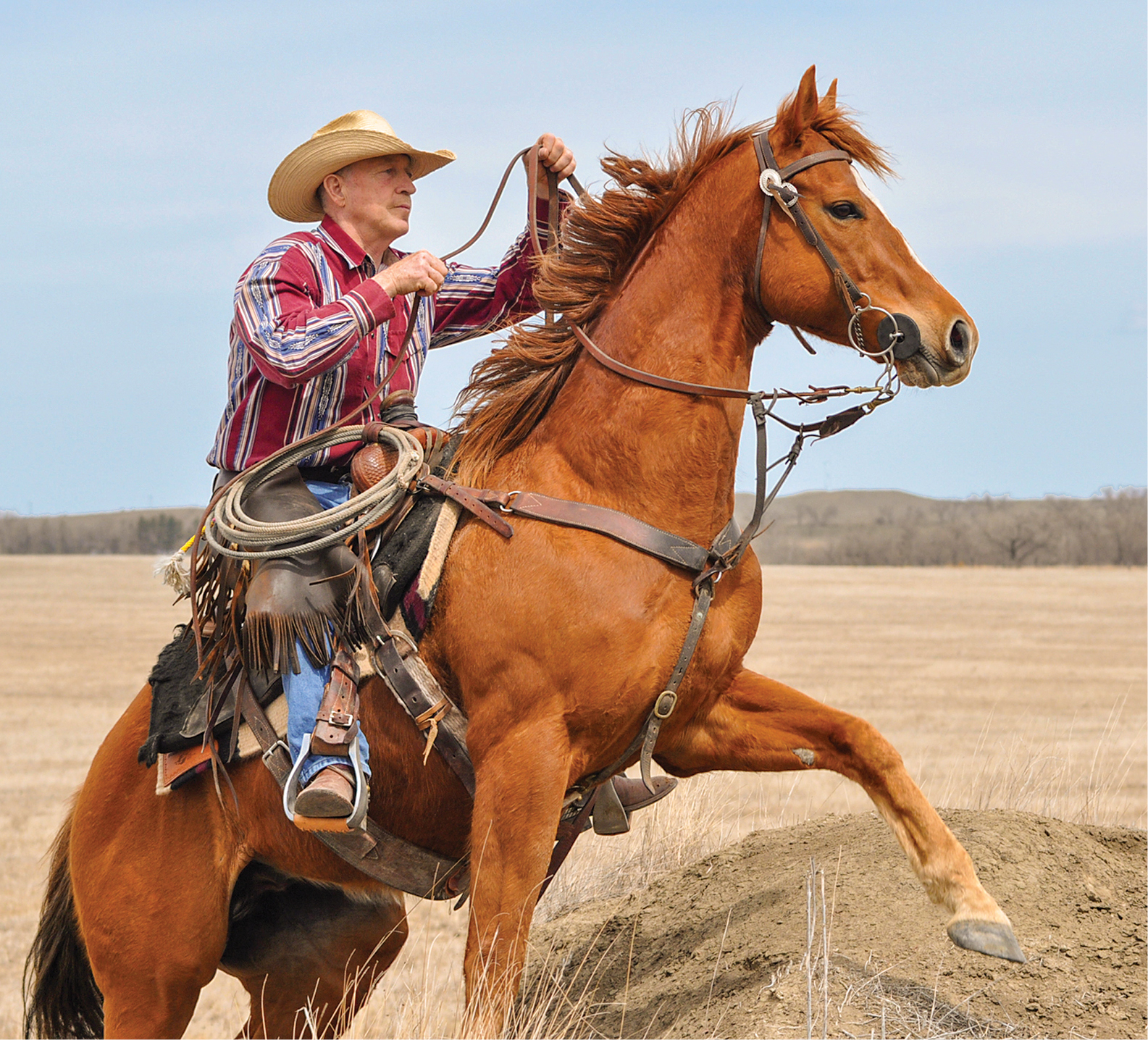
“He really toes in, and he wouldn’t have brought a ham sandwich as a yearling because of that conformational fault. But it turns out he was one of the best horses in the world in his generation.”
[ALSO: How to calm a hot horse]
From Winner’s Circle to Cattle Calls
While it might seem crazy to imagine a multimillion-dollar-earning Thoroughbred roughing it on a ranch, it’s actually not all that uncommon. Truth is, horsemen are starting to look at off-track Thoroughbreds (or OTTBs, as the industry calls them) for more than just three-day eventing or show jumping.
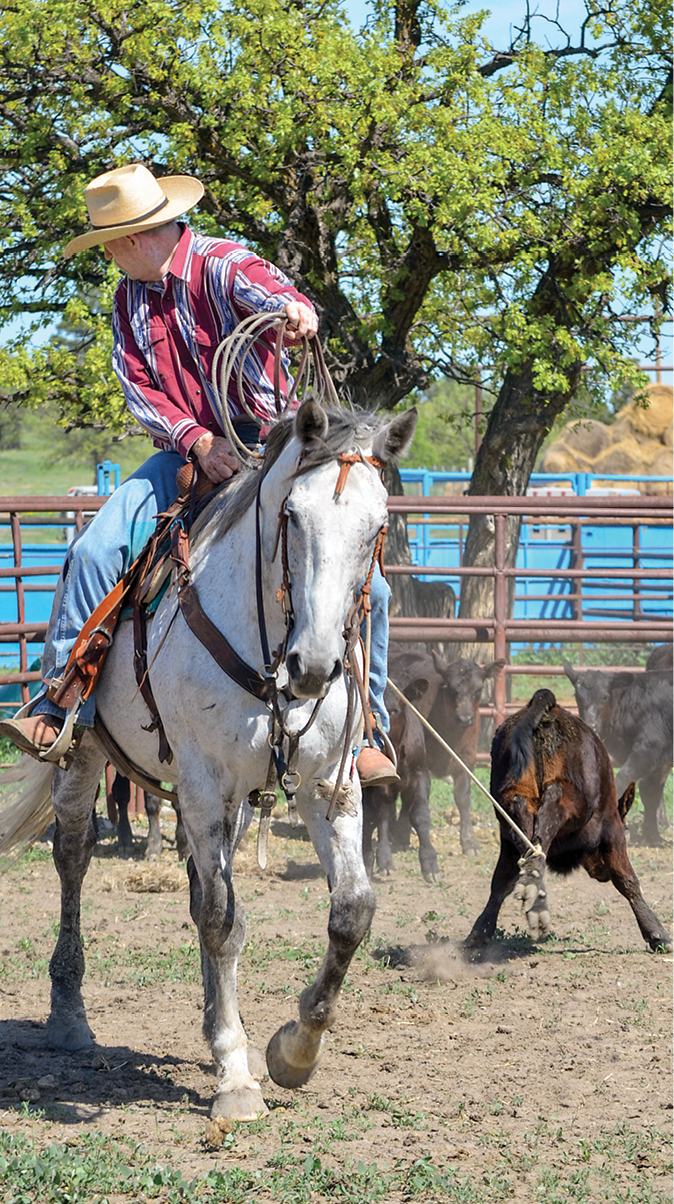
In fact, the extreme growth of the $100,000 Thoroughbred Makeover is proof that Thoroughbreds are finding their way into Western events. The Makeover pits former racehorses against each other, and no contestant can have more than a year of non-race training. Many disciplines are represented, including ranch work, barrel racing, and competitive trail.
That’s a recent trend, but if you talk with Dale Simanton and Dorothy Snowden of Belle Fourche, South Dakota, they’ll tell you Thoroughbreds working on a Western ranch isn’t really new.
“Out West a lot of people used to use Thoroughbreds,” says Snowden. “Up in this area, there are a lot of people who always had a racehorse or two they’d race in the summers on the fair circuit, then use on the ranch during the winter.”
Snowden’s husband, Simanton, grew up around dual-purpose Thoroughbreds. He remembers weekend race meets with mixed cards of Thoroughbred, Quarter Horse, Paint, and Appaloosa races. Ranchers did their work during the week, then hauled a few racehorses to the meet to play racehorse trainer on weekends.
“We kept our horses in training until they were 10 to 12 years old,” says Simanton. “We could get 90 to 100 starts out of a horse because he’d get four or five months off every year—we’d bring him home in the fall and turn him out, maybe riding him once or twice a month.”
After Simanton and his dad retired a racehorse, they’d put him through the sale as a grade, ranch-broke gelding. Downplaying the animal’s breed was necessary because many of the cowboys at the sale wouldn’t bid on Thoroughbreds, believing them to be too spirited.
Richard Weber III’s introduction to ranch-type Thoroughbreds came in a different fashion. He and his family compete in the winter sport of skijoring—an event where a horse pulls a skier through obstacles.
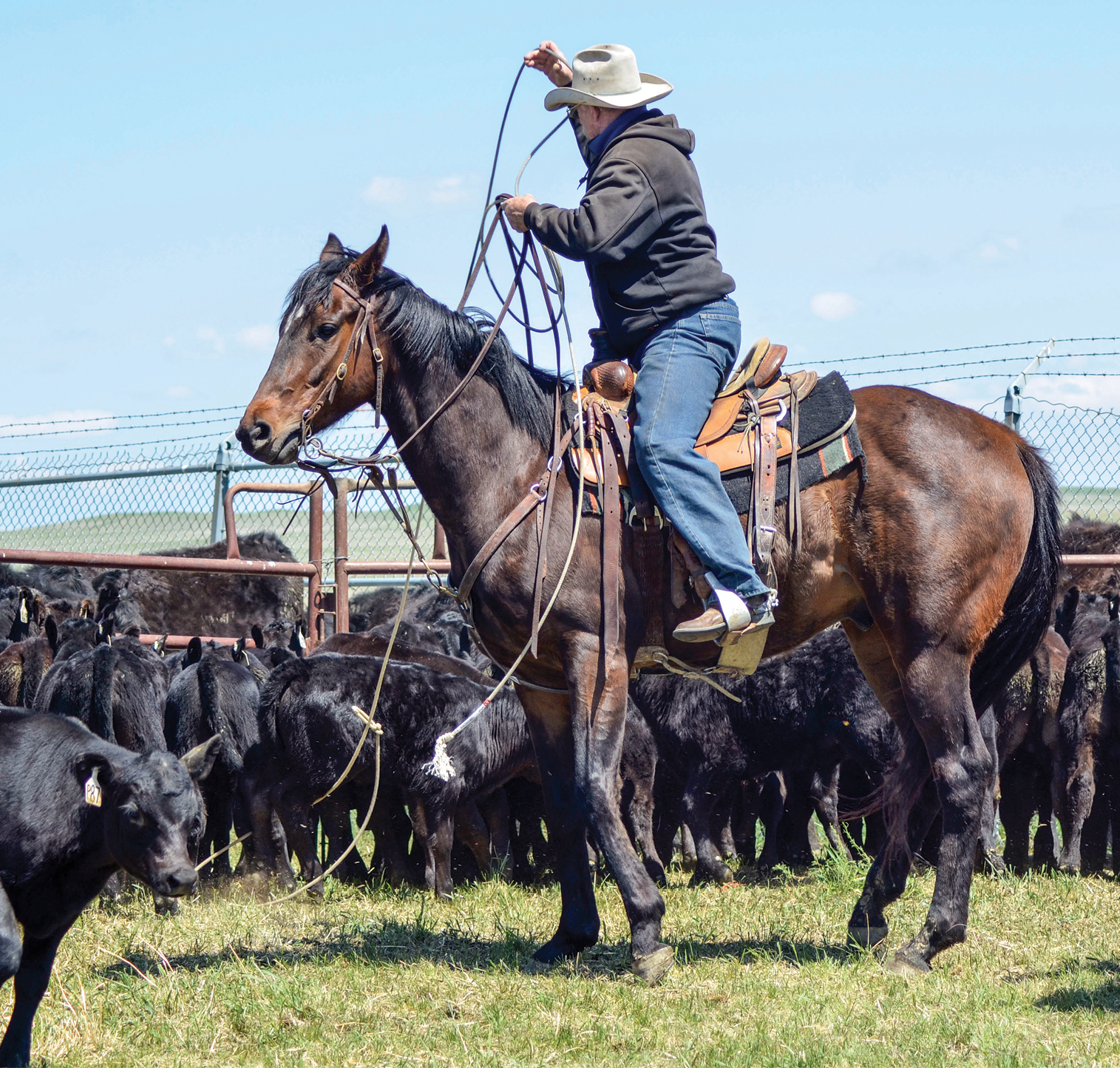
“We like speed,” says Weber. “Whether it be with cars, four-wheelers, or horses—we like to go fast. And there’s no better way to go fast than with a Thoroughbred.”
Fifteen years ago, Weber’s father purchased—as a wedding gift for his new wife—a racehorse off the track at Turf Paradise in Arizona. The OTTB proved to be a sound investment when he began being used on their Ridgway, Colorado, ranch. Far from being “too spirited,” the gelding turned out to be bombproof.
“That’s what we’ve discovered about these Thoroughbreds—they’re just great horses,” says Weber. “With 95% of the OTTBs we get, there’s no rear, no buck. They have great minds and they’re willing to work.”
[ALSO: Prevent runaway-horse behavior]
Never-ending Supply
Approximately 20,000 Thoroughbred foals are born each year. The percentage of those that make it to the track and earn money—let alone become graded stakes winners—is small. Because of this, there’s a large, ongoing supply of retired racehorses looking for new jobs.
Simanton has working relationships with several Thoroughbred trainers. One is Graham Motion, trainer of 2011 Kentucky Derby champion Animal Kingdom and earner of more than $120 million. Motion’s office manager, Sue Candy, gives Simanton a call whenever she has a horse that fits his list of needs.
“We got one horse from Graham’s barn that was purchased for $550,000 as a yearling but then got hurt and needed a year off,” recalls Simanton. “He’d already been turned out for six months before they called me. No one out East is going to want to take a horse they can’t ride for a year, or have the patience to just turn him out. That’s why they call me.”
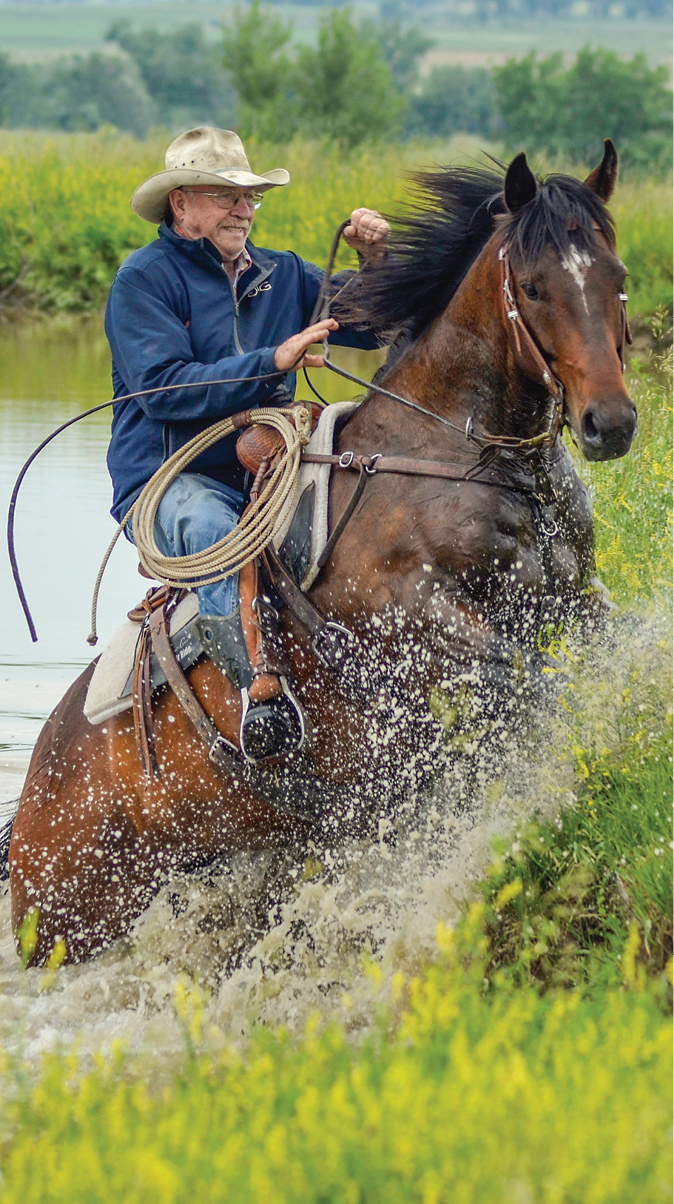
Now he claims that colt just might be one of the best ranch horses he’s ever ridden.
When looking to add to his herd, Simanton isn’t overly picky.
“He has to be free,” he begins with a laugh. “I also don’t want any cribbers, or any big knees or ankles—if the trainer doesn’t know enough to quit while the horse is still on his feet, I probably can’t use the horse.”
Simanton adds that he’ll take a horse with a bowed tendon needing rest over an animal with a chip in the knee requiring surgery. Height isn’t much of a worry, though the aging cowboy prefers the horses to be no more than 16 hands tall.
Weber doesn’t have a long checklist of must-haves, either.
“I’m not picky on looks,” he reveals. “As long as they can pass a full vet check and have won some money—so I know they’re fast and not crazy—I’ll take them. I don’t care.”
His latest horse was a relative steal for $500 at a horse rescue—considering he was purchased as a yearling for $300,000. The gelding battled shin splints his 2-year-old year, and after being turned out to heal, he wasn’t able to make a successful comeback to the track as a 5-year-old.
“The day I looked at him, I asked the woman running the rescue if I could ride him,” he recalls. “She agreed, but when she saw my Western saddle, she said, ‘He’s never had a Western saddle on him before…’ and I just said, ‘There’s a first for everything.’”
The Western Transition
Both Simanton and Weber agree that one of the perks of OTTBs is that most are thoroughly broke by the time they come to the ranch. But the two cowboys’ approaches to turning a racehorse into a ranch horse are vastly different.
When Thoroughbreds arrive at Gate to Great Geldings at Horse Creek Ranch, Simanton turns them out in a 100-foot pen for a few days to let them get acclimated. Then he’ll introduce the Western saddle so they begin to understand they’re no longer going to the track. Afterward, they’re turned out in the fields for up to six months.
“I like to let them get their racehorse weight off of them—I don’t feed any grain, so a lot of them just melt like an ice cube,” he explains. “Then they’ll start to put weight back on naturally.”
Once Simanton feels it’s time to saddle up for real, he’ll do some light ground driving and then swing his leg over. An obstacle course is set up in one hay field, with logs, small waterways, and different terrain throughout the 100 acres.

“If I can just get them to walk the first time I ride them in that field, they’re well on their way,” he says. “Then I’ll bring the cattle in.”
True to his nature, Weber likes to move things a little faster for his skijoring prospects. That $500 purchase mentioned earlier was ridden in the corral the day he was shipped to the Colorado ranch, and a rope was thrown off him that same day. A few days later, Weber started moving cattle with the gelding, plunging him deep into ranch work within the first two weeks of his new life.
“I probably do things quicker than most people,” he explains. “But for me, if I have a horse, I want to do everything on him—skijoring, competing at local rodeos, trail riding—so I need to get started as promptly as is feasible.”
Cattle Sense
For cow sense and versatility, most Western riders think “Quarter Horse.” Weber and Simanton, however, are quick to disagree.
“Thoroughbreds probably have more natural cow in them than any Quarter Horse I’ve ever ridden,” asserts Simanton. “If you get one that’s about half scared of cattle, but still has the natural aggressiveness toward cattle that most horses have, then he’ll never lose focus when working cows because he wants to know where that cow is at all times.”
Adds Weber: “To say there’s any task an OTTB can’t do is crazy in my opinion. Especially working up in the mountains, roping 50 calves in a day, and working a branding, that’s where they shine. Thoroughbreds are like the Energizer Bunny, and I love that they have that marathon aspect to them.
“For me, to have a horse whose heart won’t stop means everything. They don’t quit you—they give you their all.”
Weber does point out, however, that a Quarter Horse is better suited for the heaviest duties.
“If you’re going to go rope a 2,000-pound bull, that might not be a job for a Thoroughbred. They’re not as big and aren’t built the way a stout Quarter Horse is,” he explains.
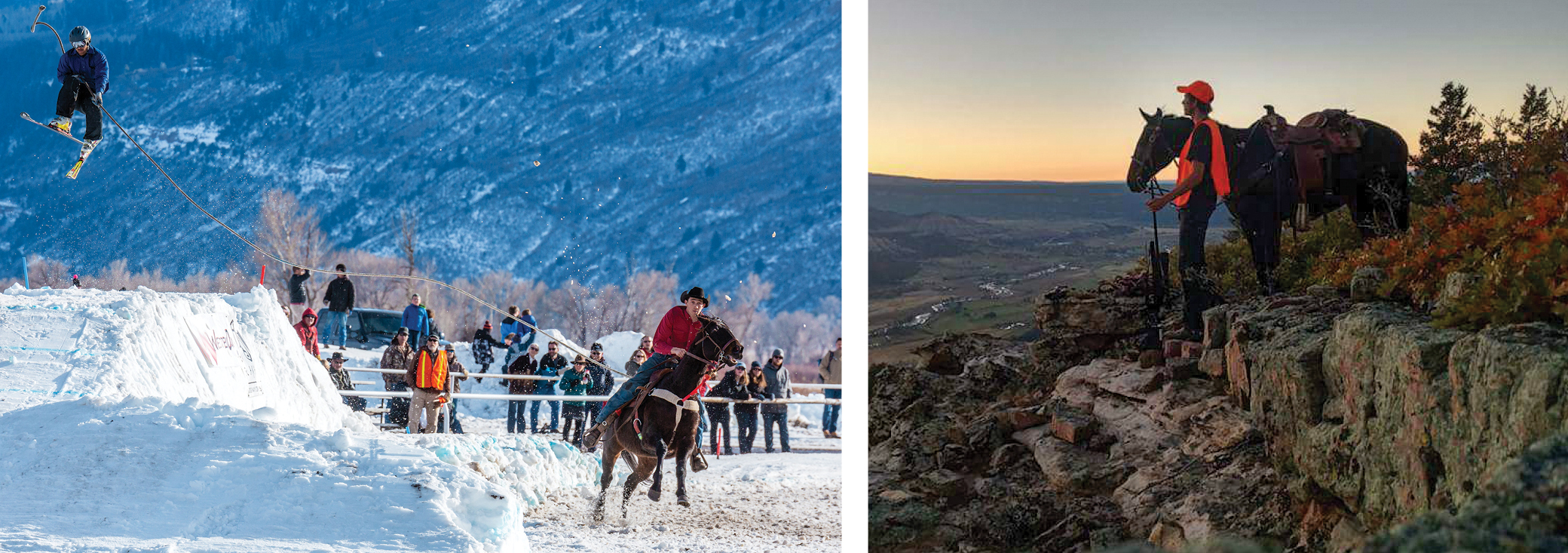
Not for Everyone
Because of the nature of the Thoroughbred breed, Simanton warns that not everyone is cut out to transition a racehorse into a ranch horse.
“You don’t want to get in over your head,” he cautions. “I’ve heard stories of the trouble people can run into if they don’t do their homework.”
Though he’s older, Simanton relies on his 40 years of experience in horse racing as a jockey, owner, and trainer. He says this has helped give him a good idea of “how the horses got the way they are, so it’s easier for me to undo it.”
He suggests getting expert help. “Get in touch with somebody who knows what they’re doing, and get some direct advice,” he says. “Or just go buy one that’s already been remade into a ranch horse.”



